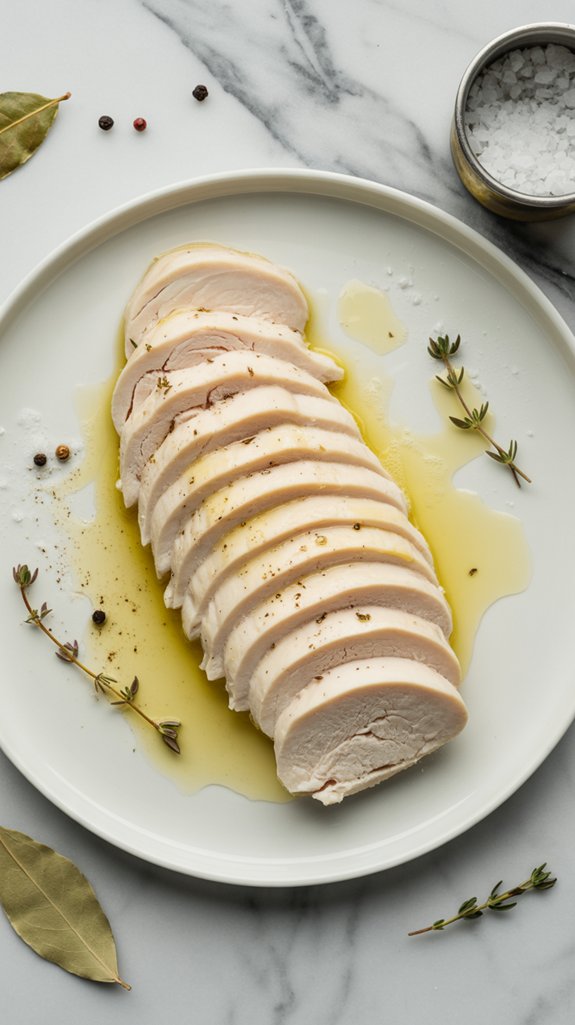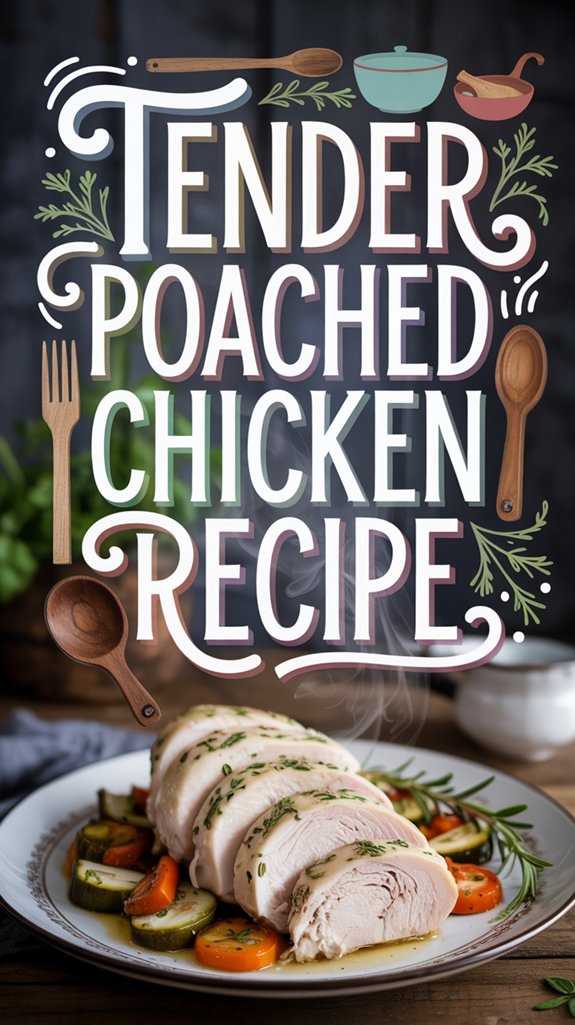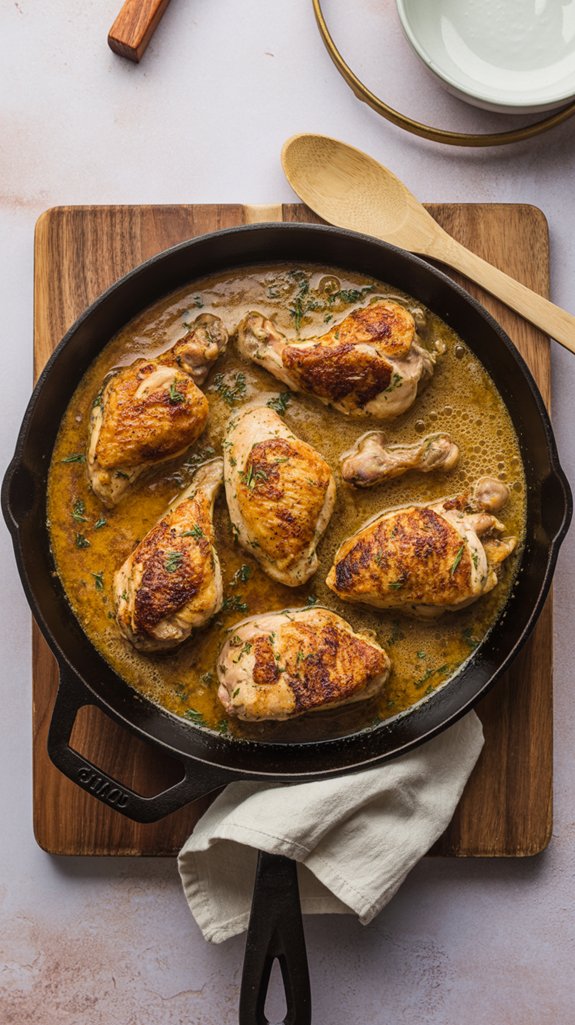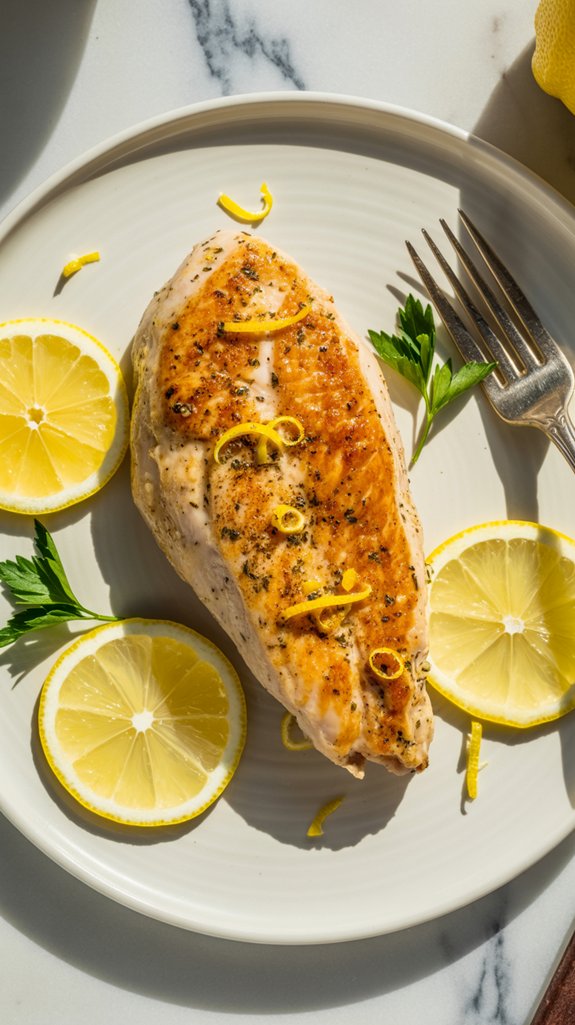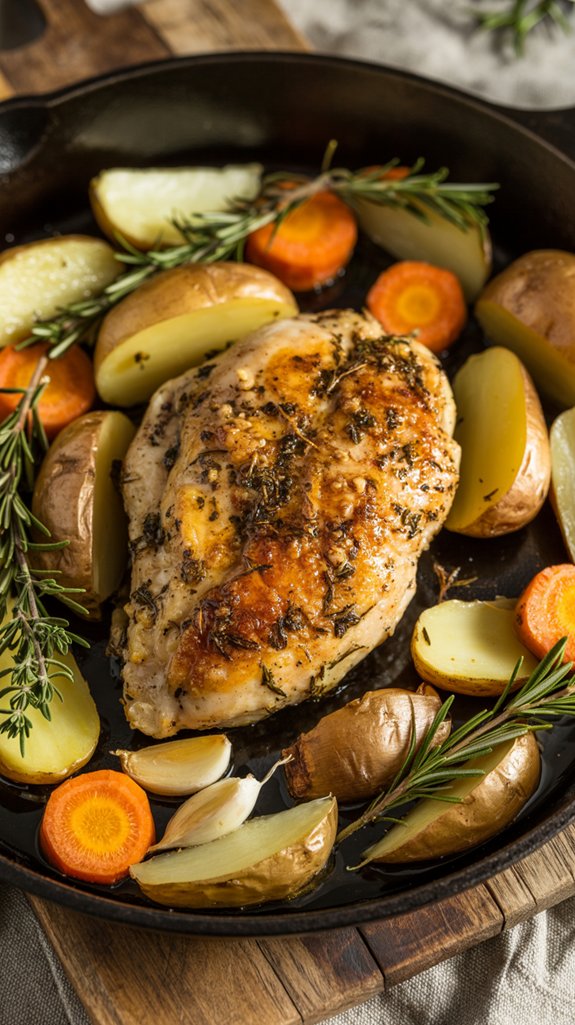Why You’ll Love This this Perfectly Tender Poached Chicken Breast
This foolproof poached chicken method gives you the most tender, juicy results every time – no more dry, rubbery chicken disasters that make you question your cooking skills.
The gentle simmering technique keeps the meat incredibly moist while the resting time lets those proteins relax, kind of like a spa day for your chicken.
You’ll end up with perfectly cooked protein that shreds beautifully for salads, soups, or any recipe that calls for cooked chicken, and honestly, it’s so simple that even someone who burns water could master it.
Ingredients List
You literally need just two things to make this magic happen, which is probably why I love this recipe so much.
- Water to cover chicken breast
- 2-4 chicken breast halves
Here’s what makes this ingredient list even better from a health perspective:
- You’re not adding any oils, butter, or fats, so you’re getting pure, lean protein without extra calories sneaking in.
- There’s no sodium unless you choose to add it, making this perfect for anyone watching their salt intake.
- Since you’re using just water, you avoid all those weird chemicals and preservatives that come in store-bought broths.
- The gentle cooking method preserves more of the chicken’s natural nutrients compared to high-heat methods that can break down proteins.
- You can easily control the quality by choosing organic or free-range chicken breasts if that’s your thing.
Step by Step Directions

Making poached chicken breast is incredibly simple and takes just a few basic steps to achieve perfectly tender, juicy results.
- Bring water to a boil – Fill a pot with enough water to completely cover your chicken breasts and bring it to a rolling boil over high heat.
- Add chicken breast – Carefully lower the chicken breast halves into the boiling water using tongs or a slotted spoon.
- Turn down the heat and simmer for 12 minutes – Immediately reduce the heat to low-medium to maintain a gentle simmer, then cook for exactly 12 minutes.
- Take off the heat and let them sit for at least 15 minutes – Remove the pot from heat completely and allow the chicken to finish cooking in the hot water for a minimum of 15 minutes.
- Add to recipe as needed – Remove the chicken from the water and use immediately, or store in the refrigerator for up to 4 days for meal prep and other recipes.
For hands-off cooking convenience, you can also prepare tender chicken using a programmable slow cooker which allows you to set precise cooking times and temperatures.
Substitutions and Variations
• Add aromatics for restaurant atmosphere – Throw in some fresh herbs like thyme or rosemary, a few garlic cloves, or even a lemon half.
Your kitchen will smell amazing, and the chicken picks up those subtle flavors without any extra work on your part.
Additional Things to Serve With This Dish
The beauty of poached chicken is that it plays well with basically everything, kind of like that friend who gets along with everyone at the party.
- Toss it with pasta – Whether you’re going creamy alfredo or light olive oil and herbs, shredded poached chicken makes any pasta dish feel more substantial without being heavy.
- Pile it on salads – From Caesar to spinach to that weird kale thing you’re trying to convince yourself you love, this mild, tender chicken won’t compete with your dressing or toppings.
- Stuff it in sandwiches – Think chicken salad, but also consider it for wraps, paninis, or even just slapped between two pieces of good bread with some mayo and lettuce.
- Mix into soups – Drop chunks into chicken noodle, add it to minestrone, or swirl shredded pieces into that fancy ramen you’re pretending isn’t from a packet.
- Make it the star of grain bowls – Rice, quinoa, farro, whatever grain makes you feel virtuous, poached chicken adds protein without overpowering all those colorful vegetables you arranged so nicely.
- Use in tacos or quesadillas – Shred it up with some spices, and suddenly you’ve got filling that won’t dry out like regular grilled chicken sometimes does.
Cooking Tips & Tricks (Chef’s Notes)
Look, poached chicken seems foolproof until you end up with something that tastes like wet cardboard, so let me save you from that tragic fate.
- Don’t actually boil the chicken – I know the recipe says bring water to a boil first, but once that chicken hits the water, you want gentle bubbles, not a rolling boil that’ll turn your protein into rubber.
- Salt that water like you mean it – Think pasta water levels of salty, because bland poaching liquid equals bland chicken, and nobody has time for that disappointment.
- Add aromatics if you’re feeling fancy – Toss in some garlic cloves, bay leaves, or peppercorns to the water, because why not give your chicken a little spa day while it cooks?
- Use a thermometer if you’re paranoid like me – Internal temp should hit 165°F, but honestly, if you follow the timing and the chicken feels firm but not hard, you’re probably good.
- Don’t skip the resting time – Those 15 minutes aren’t optional, they’re when the chicken finishes cooking gently in its own heat, which is basically magic.
- Save that poaching liquid – It’s basically weak chicken stock now, so stick it in the fridge and use it for rice or soup later, waste not want not.
- Slice against the grain – If you’re cutting it up instead of shredding, look for those muscle lines and cut perpendicular to them, your jaw will thank you.
Nutritional Facts
Basic poached chicken breast is pretty much the poster child for lean protein, so here’s what you’re getting per 4-ounce serving:
- Calories: Around 185 calories – basically nothing when you consider how filling it is
- Protein: 35 grams – that’s roughly 70% of your daily protein needs right there
- Fat: 4 grams total, with only 1 gram being saturated fat – your heart will be happy
- Carbohydrates: Zero, zilch, nada – perfect for keto folks or anyone watching their carbs
- Sodium: About 75mg naturally occurring – way less than most processed foods
- Potassium: 250mg – decent for muscle and heart function
- Phosphorus: 200mg – good for bones and teeth
- Niacin (B3): 13mg – nearly your entire daily requirement for energy metabolism
- Selenium: 27mcg – solid antioxidant support
- Vitamin B6: 0.5mg – helps with brain function and mood regulation
- Cholesterol: 85mg – present but not excessive
- Iron: 1mg – not huge, but every bit helps
Fun “Did You Know?”
Speaking of impressive nutritional stats, here’s something that’ll blow your mind: chicken wasn’t always the go-to protein it’s today.
Back in the 1930s, chicken was actually more expensive than beef! It wasn’t until innovative farming techniques emerged that chicken became affordable for everyday families.
Here’s another fun fact: poaching chicken actually dates back to ancient Rome, where they’d cook meat in wine and herbs.
The technique preserves more nutrients than other cooking methods because you’re not exposing the protein to high heat that breaks down vitamins.
Pretty cool that we’re still using this centuries-old method, right?

